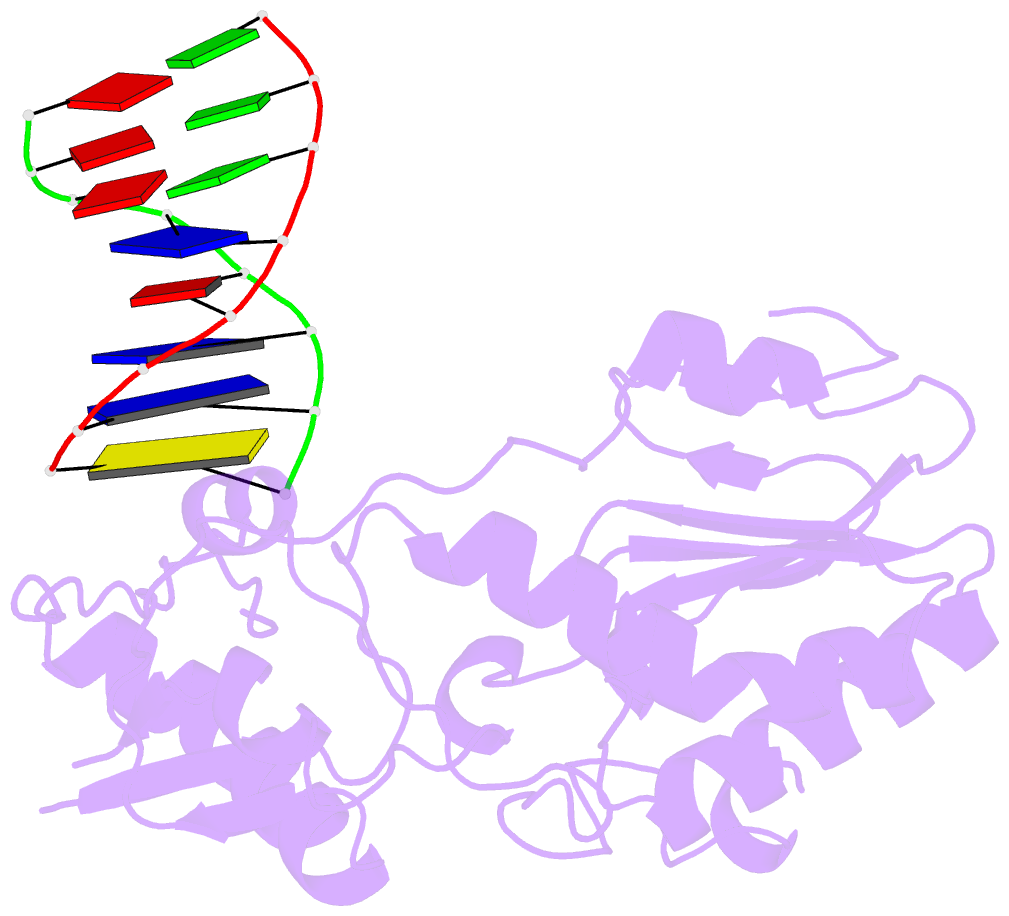Summary information and primary citation
- PDB-id
- 6b1q; SNAP-derived features in text and JSON formats;
DNAproDB
- Class
- DNA binding protein-DNA
- Method
- X-ray (1.9 Å)
- Summary
- Hydrogen bonding complementary, not size complementarity is key in the formation of the double helix
- Reference
- Hoshika S, Singh I, Switzer C, Molt Jr RW, Leal NA, Kim MJ, Kim MS, Kim HJ, Georgiadis MM, Benner SA (2018): ""Skinny" and "Fat" DNA: Two New Double Helices." J. Am. Chem. Soc., 140, 11655-11660. doi: 10.1021/jacs.8b05042.
- Abstract
- According to the iconic model, the Watson-Crick double helix exploits nucleobase pairs that are both size complementary (big purines pair with small pyrimidines) and hydrogen bond complementary (hydrogen bond donors pair with hydrogen bond acceptors). Using a synthetic biology strategy, we report here the discovery of two new DNA-like systems that appear to support molecular recognition with the same proficiency as standard Watson-Crick DNA. However, these both violate size complementarity (big pairs with small), retaining hydrogen bond complementarity (donors pair with acceptors) as their only specificity principle. They exclude mismatches as well as standard Watson-Crick DNA excludes mismatches. In crystal structures, these "skinny" and "fat" systems form the expected hydrogen bonds, while conferring novel minor groove properties to the resultant duplex regions of the DNA oligonucleotides. Further, computational tools, previously tested primarily on natural DNA, appear to work well for these two new molecular recognition systems, offering a validation of the power of modern computational biology. These new molecular recognition systems may have application in materials science and synthetic biology, and in developing our understanding of alternative ways that genetic information might be stored and transmitted.





